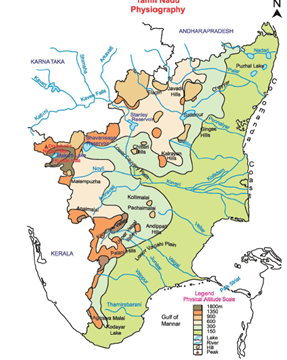

Context
Conservationists have sought better protection for the Pakkamalai and Gangavaram hills, and demand to declare the area encompassing over 7,000 hectares into a wildlife sanctuary.
About
Pakkamalai and Gangavaram hills
- Pakkamalai and Gangavaram hills is a biodiversity-rich area near Gingee in Villupuram district, Tamil Nadu.
- It is an ecologically important area in the eastern-ghats.
- The demand for notifying Gingee hills a wildlife sanctuary was first mooted in 2019.
- The area was first notified as a Reserve Forest in 1897 and since then it has given protection to the flora and fauna found here.
Flora and Fauna of the region:
- The forests in Pakkamalai were unique with rocky terrain and houses several rare varieties of flora from tropical dry evergreen forests and dry deciduous forests.
- Pakkamalai and Gangavaram have a rich wealth of biodiversity and are a geographically important area in the Eastern Ghats.
- The forests have a good population of grizzled giant squirrel, grey langur, Pangolin, and the critically endangered golden gecko listed under Schedule I of the Wildlife Protection Act, 1972.
- The grizzled giant squirrel was first discovered from Pakkamalai in 2019.
- There have also been recorded findings of Bamboo pit viper and Gunthers toad, one of the most poorly known endemic toad.
- There are rare sightings of large carnivores like leopards and sloth bears and different species of cave bats.
- About 21 endemic plant species like the Adhatodasengiana and Drypetes porteri have also been recorded in the hills.

Benefit of declaring it a wildlife sanctuary:
- Declaring it as a wildlife sanctuary will certainly help protect the endangered flora and fauna in the long run apart from initiating conservation activities.
- The declaration of the hills as a wildlife sanctuary would ensure the protection of both native and endemic species besides maintaining a healthy biodiversity reserve.
- It would also ensure the protection of the living gene bank of endemic and endangered taxa.

